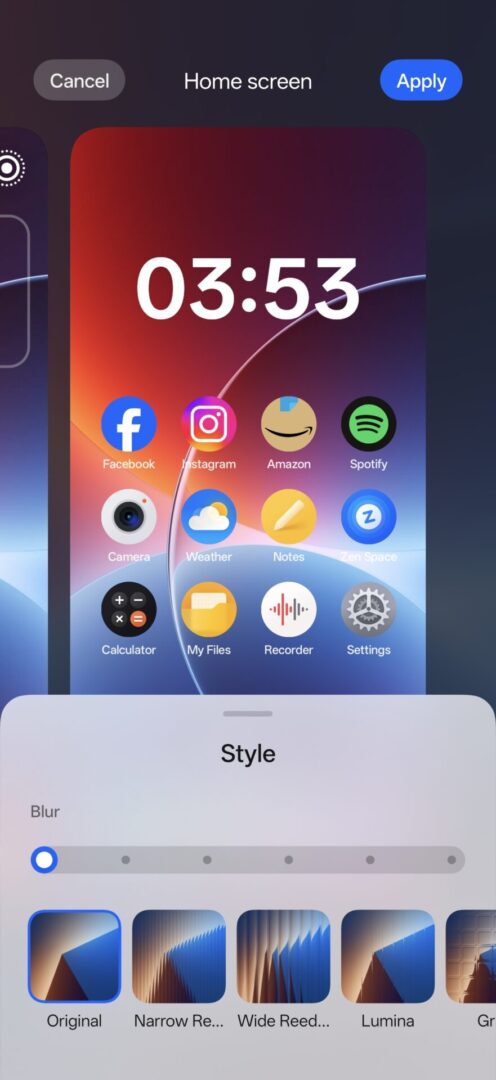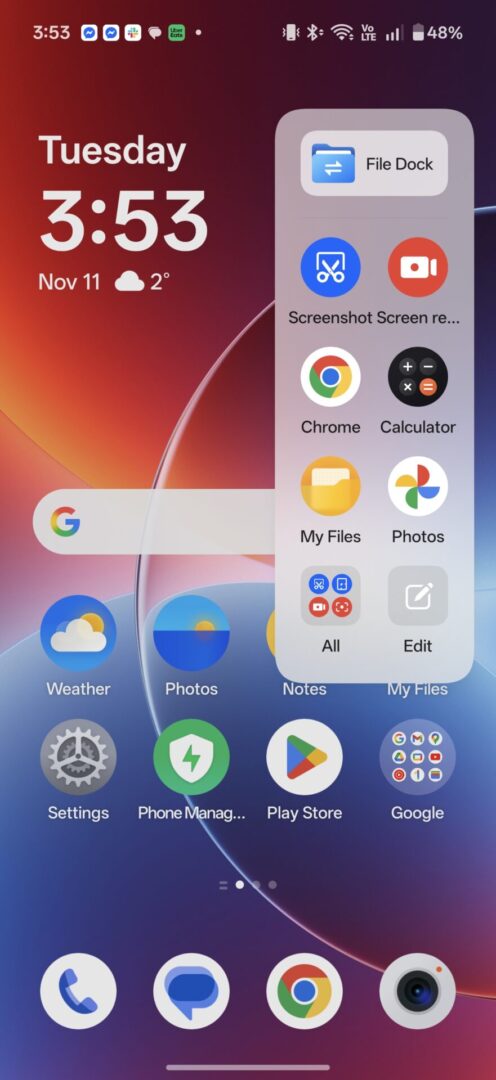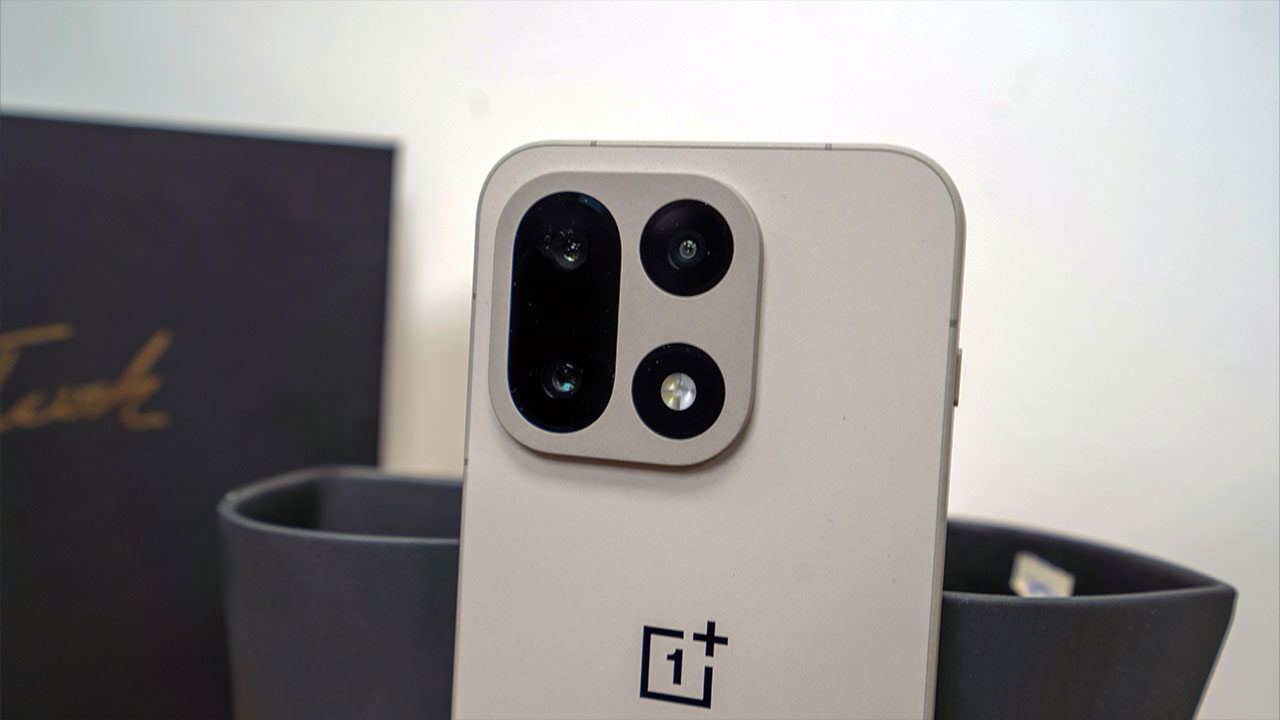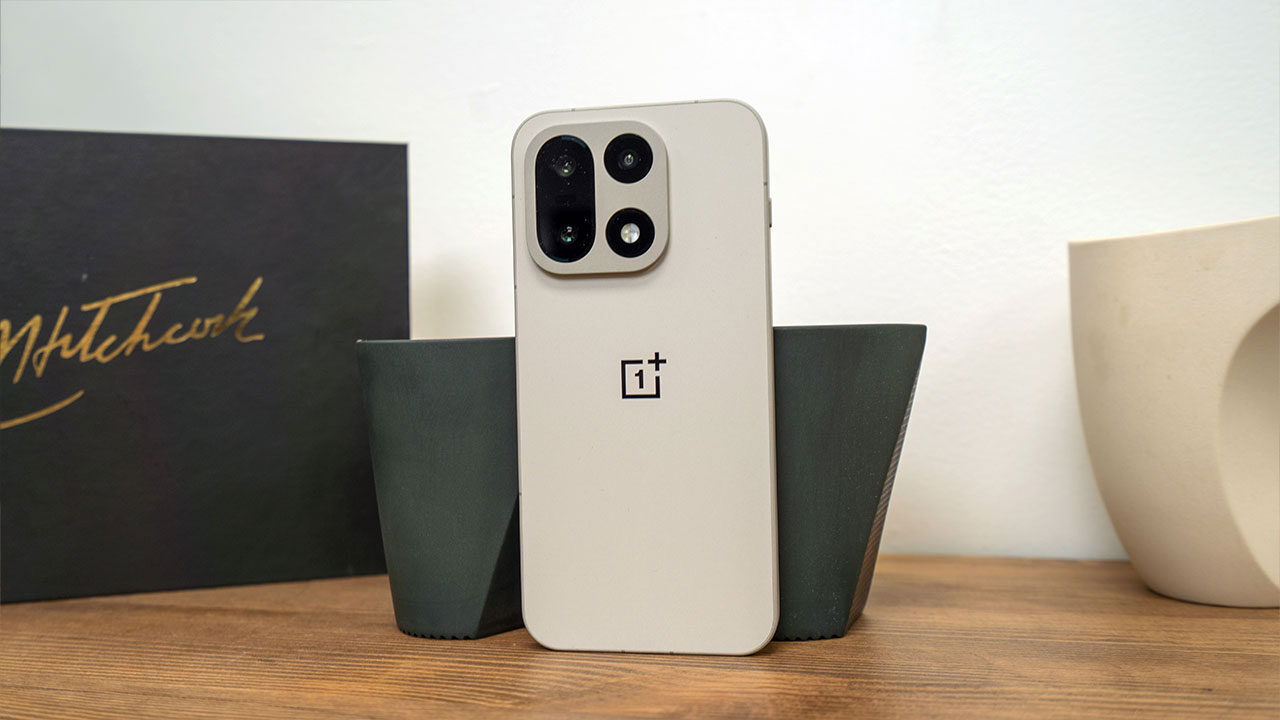OnePlus has built a name for itself by delivering some of the best phones at prices that undercut the competition. The OnePlus 15 looks to continue this tradition, offering major upgrades, a new look, and a few changes that may divide users. After using the device for a few weeks, I can safely say OnePlus has crafted something new, impressive and potentially decisive, while still making one of the best phones I have used in 2025.
The OnePlus 15 is the first phone released after the company’s partnership with Hasselblad ended. With that, it offers an experience that feels quite different from past models. The iconic circular camera bump has been replaced by a squircle design that feels more generic, although I rather like the new look. Even the beloved alert slider is gone, replaced by a customizable shortcut button that can be adjusted to fit your needs. These changes signal a shift in focus for this year’s device: raw power, gaming performance and battery endurance that stretches beyond what most flagships can deliver.

Unboxing this year’s phone reveals a design that looks very different from past versions. Gone are the curved body, circular camera bump and distinctive finish options. The OnePlus 15 features flat sides with curved corners, a squircle camera layout and subdued colour choices. It measures 161.42 by 76.67 millimetres, with a thickness of 8.2 millimetres, and weighs about 215 grams. The centred OnePlus logo on the back contributes to a more balanced aesthetic, though it does take away some of the distinctive look of earlier models.
Ultra-slim bezels measuring 1.15 millimetres on all four sides create a more immersive viewing experience. OnePlus detailed the low-injection-pressure over-moulding technology that enables these narrow borders by precisely injecting resin into minimal space. Turning on the device, I have to say they are impressive and provide a solid viewing area that wastes little space. I’m sure there are plenty of people who like the curved glass screens of past devices, but I really enjoy seeing phones return to a flat design that reduces accidental touches when holding the device and offers a better viewing experience overall.
The new finish on the OnePlus 15 is eye-catching and offers a bold look that is very different from past devices. The Sand Storm colour option introduces micro-arc oxidation technology to the frame, an aerospace-derived, plasma-based electrochemical process that creates a ceramic-grade coating. OnePlus claims this new finish makes the mid-frame 3.4 times harder than aluminum and 1.3 times tougher than titanium, using an eco-friendly production method that avoids acidic chemicals. It sounds similar to Ceraluminum from ASUS and delivers a comparable feel. It feels great in the hand and resists the fingerprints that frustrate any tech photographer.

The OnePlus 15 comes in three colour options: Infinite Black, with advanced anti-glare glass that resists fingerprints; Sand Storm, pairing the MAO-treated frame with a fibreglass back panel; and Ultra Violet, featuring a dual-texture coating that creates light-responsive surfaces where blue and violet shades shift with movement. All the options look impressive, but after using the Sand Storm version for two weeks without a case, I can say it’s a fantastic finish that holds up well to daily use.
The phone features a comprehensive IP rating, including IP66, IP68, IP69, and IP69K, for enhanced dust and water resistance. The IP68 certification guarantees protection against submersion up to two metres for 30 minutes, while IP69 and IP69K ratings protect against high-pressure water jets at temperatures up to 80°C.
“The new finish on the OnePlus 15 is eye-catching and offers a bold look that is very different from past devices.”
The OnePlus 15 also features a dedicated Wi-Fi chip with customized, high-performance front-end modules that boost transmit power and signal integrity. It maintains strong Wi-Fi connections even in challenging environments, extending coverage farther from routers than standard setups. The chip also eliminates dead zones in large homes and provides stable, low-latency connections during gaming. Bluetooth 6.0 support, Wi-Fi 7 compatibility, and USB 3.2 Gen 1 speeds complete the connectivity package.
Under the hood, the OnePlus 15 is a notable upgrade for people looking to push their phone’s performance for gaming or complex app use. OnePlus has adopted a triple-chip architecture that combines the Snapdragon 8 Elite Gen 5 processor with dedicated touch-response and Wi-Fi chips. This setup delivers processing power that outpaces competing flagships while maintaining the thermal efficiency needed during extended gaming sessions.

The Snapdragon 8 Elite Gen 5 features a third-generation Qualcomm Oryon CPU running at 4.6 gigahertz, providing 20 percent better performance and 35 percent improved power efficiency compared to previous generations. The Adreno GPU offers 23 percent more graphics performance and 20 percent improved efficiency. OnePlus pairs this with LPDDR5X Ultra+ RAM running at 10,667 megabits per second in the 16-gigabyte variant, creating one of the fastest memory configurations available in smartphones today.
What makes this setup stand out is OnePlus’s custom CPU scheduler. Unlike Android’s standard scheduler, which can leave up to 10 per cent of resources unused during gaming, OnePlus allocates power with precision. The result is sustained performance that other phones can’t match.
Keeping everything cool is the 360 Cryo-Velocity Cooling System. OnePlus uses a 5,731-square-millimetre, three-dimensional vapour chamber for core heat dissipation, paired with a white graphite back cover for additional thermal spread. An aerogel screen cooler, derived from aerospace technology, sits on the front to prevent heat from the processor from transferring to the display surface. This front-to-back design maintains peak performance during intense gaming without creating uncomfortable surface temperatures.

In benchmarks, the OnePlus 15 delivers impressive results, posting Geekbench 6 CPU scores of 3,621 for single-core and 10,425 for multicore performance. For comparison, the Samsung S24 Ultra managed 2,136 in single-core and 6,675 in multicore testing. In our 3DMark Wild Life benchmark, the OnePlus 15 achieved an excellent score of 24,463, maxing out the Vulkan test. I ran several additional 3DMark tests to gauge overall performance, and all produced similar results, with 3DMark maxing out in every scenario. In the end, actually playing games proved a better measure of how well the phone performed.
The OnePlus 15 delivers solid results across a range of games I tested. Genshin Impact, a staple for measuring how smoothly a phone can run demanding titles, performed flawlessly with no frame drops and a consistently fluid experience. Honkai: Star Rail also delivered a smooth experience, with quick loading times and excellent visuals. Even Diablo Immortal ran without issue, maintaining a buttery-smooth frame rate even when hordes of enemies filled the screen.
The OnePlus 15 introduces the world’s first 1.5K, 165Hz smartphone screen, something that feels tailor-made for pro-level gaming. The LTPO panel delivers smoother visuals and faster response times that give players an edge in fast-paced titles. Games such as Call of Duty, Clash of Clans and Real Racing 3 run natively at 165 frames per second, while frame interpolation technology brings that smoothness to other titles, and it looks fantastic. Much like on PC monitors, not all games will take full advantage of the 165Hz capability, but the ones that do look excellent and show how far smartphone gaming has come.
That said, if you have been following OnePlus for a while, you will notice a slight downgrade in resolution with the OnePlus 15. The 165Hz capability comes at a cost: the display resolution drops from the 3,168 by 1,440 found on the OnePlus 12 down to 2,772 by 1,272. OnePlus says that running QHD+ resolution at 165Hz is not technically feasible, so the company chose refresh rate over pixel density. For gaming enthusiasts, the trade-off makes sense. For everyone else, it is a harder sell, especially when the OnePlus 12 still offers sharper text and images.

The dedicated touch response chip delivers the industry’s highest instant touch sampling rate at 3,200Hz, far exceeding the 1,440Hz to 2,400Hz range found in other flagships. Every swipe, tap and gesture registers with near-zero latency. The display reaches 1,800 nits in high brightness mode for outdoor visibility and dims down to one nit for nighttime use. It can drop to 0.5 nit when the Reduce White Point feature is enabled. TÜV Rheinland Intelligent Eye Care 5.0 certification is included, featuring Eye Comfort Reminders and a gaming mode that reduces saturation to help prevent visual fatigue.
After using the phone for a while, I think the 3,168 by 1,440 display looks fantastic across all types of media. Gaming on the device is striking, offering excellent colour reproduction with vibrant colours, deep blacks and strong contrast. The 165Hz refresh rate is impressive for games that support it, and even when a title does not take full advantage of that potential, this is a phone that feels built for gaming and media, and it performs both tasks very well.
While there are some design choices that some people may not like, especially compared with past OnePlus devices, one thing that will impress most users is the battery. The 7,300-milliamp-hour Silicon NanoStack battery is a notable achievement of the OnePlus 15. It is the largest battery capacity in any flagship smartphone, made possible by incorporating 15 per cent silicon content in the anode for greater energy density. The battery maintains more than 80 per cent health after four years of use and continues operating in temperatures as low as –20°C.

Real-world performance matches the specifications. The phone delivers up to 6.6 hours of high-level gaming at 165 frames per second on a single charge. Multi-day battery life is achievable for moderate users, delivering solid endurance of more than two days when I use the phone mainly for email, light social media and video streaming. When I push the device with content creation, photography and light gaming, it still lasts more than 10 hours, making it easier not to worry about battery life while away from a plug.
Thankfully, if you are near a plug, charging speeds remain fast, though not quite as aggressive as some might hope. The phone supports 80-watt SUPERVOOC wired charging, with support for up to 100 watts when using the optional 100-watt GaN adapter. Wireless charging tops out at 50 watts, including magnetic wireless charging with a compatible case. Bypass charging lets gamers power the device directly from an outlet during marathon sessions, reducing heat and helping preserve long-term battery health.
While a lot has changed this time around with the OnePlus 15, for many, the camera system will be the biggest departure compared to recent OnePlus devices. With the Hasselblad partnership over, OnePlus switched to its own DetailMax Engine for image processing. The hardware consists of three 50MP sensors: a Sony IMX906 main camera, an OV50D ultra-wide with a 116-degree field of view, and a JN5 periscope telephoto offering 3.5x optical zoom. The front camera uses a 32MP Sony IMX709 sensor with an RGBW pixel array that is said to capture 60 per cent more light for better low-light selfies.




On paper, these sensors represent downgrades from the OnePlus 13 and even the OnePlus 12 in some respects. The main camera sensor is smaller, the telephoto lens has slightly more reach but a narrower aperture, and the ultra-wide drops from 48 megapixels to 50 megapixels. OnePlus is relying heavily on computational photography to make up for the hardware changes. I’m still on the fence about whether the OnePlus 13 or OnePlus 15 produces better photos, but even with these differences, the phone still manages to capture some truly impressive shots. The Hasselblad tuning provides a distinct look to images, though not necessarily one that’s objectively better overall.
While the OnePlus 15 does lose some of the signature Hasselblad character, the DetailMax Engine introduces several computational features designed to maximize image quality. The Ultra-Clear 26-megapixel mode fuses multiple 12-megapixel frames for wide dynamic range with a 50-megapixel frame for resolution, producing final images with excellent texture detail in practical file sizes. Clear Burst captures 10 photos per second with dual-exposure anti-blur technology, combining short exposures to freeze motion and long exposures for enhanced detail. The Clear Night Engine uses dual analog gain technology to eliminate timing gaps between frames, resulting in cleaner low-light photos with a wider dynamic range.




After testing the phone’s photographic performance for some time, I’m honestly impressed. Images look sharp and clear, with colours that are vibrant without being oversaturated, preserving a true-to-life feel. Day and night shots both deliver strong detail, and there are still plenty of photo modes to explore, along with a variety of filters if you want to experiment with different photographic looks. The OnePlus 15 also handles harsh lighting well, delivering striking results that highlight the cameras’ capabilities and the DetailMax Engine’s performance compared to earlier phones.
“While the OnePlus 15 does lose some of the signature Hasselblad character, the DetailMax Engine introduces several computational features designed to maximize image quality.”
Video capabilities include 4K recording at 120 frames per second with Dolby Vision HDR, making the OnePlus 15 one of the first Android phones to offer this combination. Real-time tone mapping intelligently separates subjects from backgrounds, applying optimized adjustments to each as footage is captured. Skin tones appear accurate under all lighting conditions. Professional tools include O-Log colour space recording for a wider dynamic range, the industry’s first live LUT preview, continuous optical zoom from 1x to 3.5x in portrait mode, and an underwater mode for freshwater photography.
The OnePlus 15 comes preloaded with OxygenOS 16, based on Android 16, which introduces several AI-powered features built around Plus Mind, a unified system for saving and retrieving information. A simple press of the Plus Key or a three-finger swipe saves any on-screen content to Mind Space, a searchable repository. The system understands context, automatically extracting dates and times to prompt calendar entries. Deep integration with Google Gemini allows the AI assistant to access Plus Mind data, combining personal notes with real-time internet information for customized responses.



Additional AI tools include recorder transcription with speaker identification and summary generation, portrait lighting correction for underexposed photos, document scanning with distortion correction, and experimental options like menu translation. Parallel Processing 2.0 creates a consistently smooth interface, whether opening apps, switching between tasks or accessing widgets. Predictive back gestures show animated previews of destinations before confirming navigation. Dual App Control allows simultaneous interaction with two applications on one screen.
To be honest, I don’t think these AI tools add much to the overall experience of using the phone, but they don’t get in the way either. And that, in the end, is what matters, since the OxygenOS 16 experience is excellent beyond the AI additions. It’s fast, responsive and packed with the features and customization you’d expect from a modern operating system. It also looks sharp and lets the phone showcase its hardware with ease.
As in past versions, the built-in gaming features offer handy, quick settings that enhance the experience. I’m also a fan of the OnePlus camera app, which provides an easy-to-use set of controls that feel more straightforward than those on the Pixel camera app — at least in this reviewer’s opinion.

At the end of the day, the OnePlus 15 is a solid device. While it moves away from some of the features fans have grown to appreciate about the brand, it delivers a phone that performs well across the board without falling short in any key area. The 7,300-milliamp-hour battery, 165-hertz display and triple-chip architecture make it a gaming powerhouse that outperforms more expensive flagships. The user interface integrates smoothly into daily use, and the durability ratings offer peace of mind. Even with the camera changes compared with the OnePlus 13, it remains a strong contender, despite the end of the Hasselblad partnership.
For gamers and power users who value performance and battery life above all else, the OnePlus 15 makes a compelling case. Its sustained frame rates, responsive touch input and multi-day battery life create an experience few competitors can match. For photography enthusiasts or those who prioritize display sharpness, the OnePlus 12 or other flagship phones might be better options. OnePlus has built a phone with a clear target audience, and for that group, the OnePlus 15 delivers exactly what they want. Everyone else will need to decide whether the trade-offs fit their needs.






